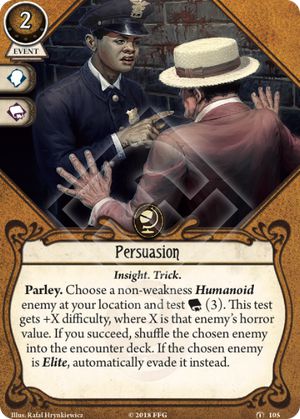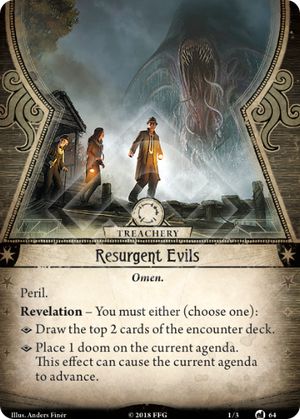
Edit: Weirdmarine asked in another review how many cards Harvey Walters could draw. The answer is too big of a comment, so i updated my review.
First assume the following cards are in play
- Dream-Enhancing Serum
- 2x Laboratory Assistant (add Charisma for a second ally slot)
- 2x Arcane Enlightenment (add Sign Magick with Versatile for a third arcane slot)
- 2x Vault of Knowledge.
This brings him to a max handsize of 18 and only the first copy counts against your handsize. With those 7 cards in play your deck will be smaller. So you're likely drawing more cards than your deck and discard have so you'll take horror each time you shuffle your empty deck and go insane.
Even outside Harvey (without Vault of Knowledge) you end up with a max hand size of 14. So you still draw lots of cards that could make you go insane as well.
Updated review of this card
Seekers have a lot of card draw, but redoing your hand is very powerful, especially when your cards don't help or you ran out. on some encounter cards can result in that.
Combos
- Playing this with any version of Ancient Stone in can deal homungus amounts of damage or heal horror (but it provokes an OA).
- Increase your hand size to draw more cards
- Dream-Enhancing Serum
- 2x Laboratory Assistant (add Charisma for a second ally slot)
- 2x Arcane Enlightenment (add Sign Magick with Versatile for a third arcane slot)
- If you're playing Harvey Walters, 2x Vault of Knowledge
Alternatives
- If you're looking for specific cards, use No Stone Unturned or Mr. "Rook" instead. The first can also be used to help other players
- Cryptic Research costs 1 fewer XP, no ressources and no action; Can also target other players



